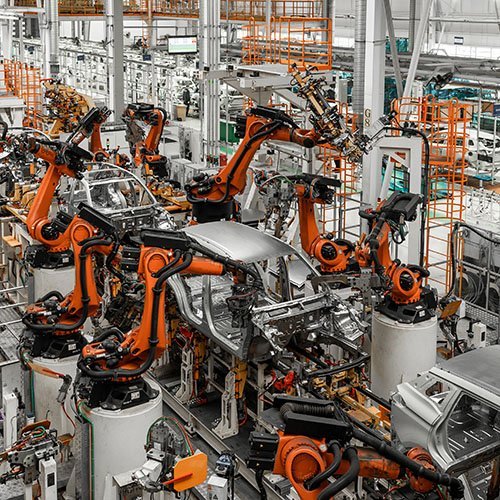The automotive industry is showing signs of recovery after years of supply chain disruptions caused by the pandemic and other global issues. Companies have implemented new risk management strategies and leveraged technology to ensure smoother operations, leading to a more resilient supply chain. While environmental challenges and political instability persist, the auto manufacturing sector has largely adjusted to the “new normal” and is working to bring production levels back to pre-pandemic norms.
Stabilizing the Automotive Industry’s Supply Chain in 2024
Companies remain cautious, recognizing that supply chain disruptions are still possible. The Panama Canal drought, attacks on cargo ships, and fluctuating availability of raw materials remind manufacturers of the need to remain flexible and prepared for future disruptions. Despite this, 2024 is looking brighter, with manufacturers returning to higher production volumes, signaling a slow but steady recovery for the automotive industry.
Electric Vehicles: A Mixed Outlook for the Future
The automotive industry’s relationship with electric vehicle (EV) production is a topic of debate. Some experts see EV production continuing to rise, driven by investments in new assembly lines and retooling existing facilities for EV and hybrid vehicles. In contrast, others see a slowdown in EV demand, particularly as consumer interest has tapered off in recent months.
Despite these mixed signals, EV sales reached a high point in 2024. Federal support remains strong, with recent grants aimed at expanding the U.S. charging infrastructure. Additionally, battery manufacturing is gaining momentum, with several large manufacturers investing in domestic production.
The shift to electric vehicles is changing the nature of auto manufacturing, as companies adapt their production lines to handle EV components such as large battery packs. The unique challenges of storing and transporting these components have led to new materials handling protocols, with automation playing a critical role in ensuring safety and efficiency.
The Rise of Automation in Auto Manufacturing
Automation continues to play a pivotal role in the automotive manufacturing industry, driven by labor shortages and the need for increased efficiency. The adoption of autonomous mobile robots (AMRs) and automated guided vehicles (AGVs) is growing, as manufacturers look for ways to reduce injury rates and optimize assembly lines. Automation is helping to manage labor shortages, particularly as younger generations show reluctance to take on manual labor jobs.
In response to these challenges, many automotive companies are investing in technology to reduce their reliance on human labor. AMRs and AGVs are becoming increasingly common on factory floors, tasked with moving pallets, containers, and supplies across assembly lines. This not only boosts productivity but also improves safety, reducing the risk of injury among workers.
Robots are particularly valuable in the production of electric vehicles, where the handling of large battery packs poses significant risks to human workers. By automating these tasks, companies can create safer working conditions while allowing their workforce to focus on higher-skill tasks. Upskilling employees has the added benefit of making jobs more attractive to potential recruits, particularly as the industry struggles to attract new talent.
Material Handling Innovations: Adapting to New Challenges
The increasing complexity of auto manufacturing—especially in the production of electric vehicles—has placed a new emphasis on material handling. Automation is not only improving efficiency but also revolutionizing how materials are moved through factories. For instance, the large, heavy battery packs required for EVs demand careful handling, and robots are now responsible for tasks like flipping them over and adding additional components.
These advances in material handling are reshaping how factories operate, allowing companies to streamline production and reduce human error. Robots are also helping manufacturers reduce downtime by enabling quicker adjustments to the production line. As more factories integrate robotics and automation into their processes, they are able to ramp up production more quickly, positioning themselves for long-term growth in the evolving automotive market.
Automation is also playing a crucial role in supply chain management. With the help of advanced robotics, companies can better manage the flow of raw materials and components, ensuring that production lines remain operational even during periods of supply chain stress. These systems allow manufacturers to diagnose potential issues early and address them before they become major disruptions.
AI’s Growing Role in the Automotive Sector
While artificial intelligence (AI) has yet to fully penetrate the automotive manufacturing space, its potential is undeniable. AI, alongside machine learning, can optimize manufacturing processes by adapting to real-time changes and minimizing downtime. This shift represents a move away from pre-programmed automation toward more intelligent systems that can respond to fluctuating conditions.
Currently, AI is being tested in logistics, where it helps predict supply chain delays and reroute deliveries when necessary. Over time, AI is expected to play a larger role in material handling, enhancing the capabilities of automated systems and enabling even greater efficiency on production lines.
In the near term, AI’s role in automotive manufacturing remains largely exploratory. However, industry experts agree that its influence will grow, particularly as companies seek to leverage AI-driven insights to improve both production and supply chain resilience.
The Future of Auto Manufacturing
Looking ahead, the automotive industry is poised for a year of relative stability, with continued advancements in automation, material handling, and AI shaping its future. Electric vehicles will remain an important part of the landscape, although the pace of growth remains uncertain. What is clear is that robotics and automation will continue to be critical in helping manufacturers meet demand while keeping workers safe.
As the industry continues to navigate supply chain challenges and evolving consumer preferences, it is better equipped than ever to handle disruptions. By embracing technology and rethinking traditional manufacturing processes, automotive companies are positioning themselves for long-term success in a changing world. The integration of automation, AI, and improved material handling protocols will allow the industry to remain agile and responsive to future challenges.
In conclusion, the automotive manufacturing industry is evolving rapidly, with material handling at the heart of its transformation. As companies continue to invest in automation and advanced technologies, they are creating a more efficient, safer, and more resilient future. While uncertainty remains—particularly around the future of electric vehicles—2024 is shaping up to be a year of growth and innovation for the automotive industry.



